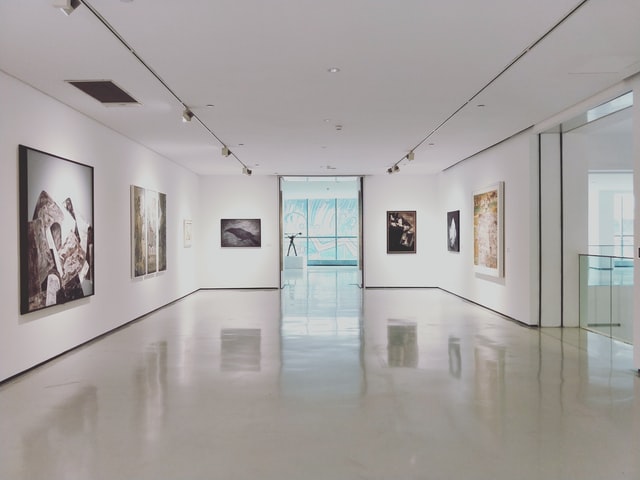As an art gallery owner, you know how important your collection is. You’ve spent years curating a beautiful selection of pieces that would fit in any museum or gallery, and now it’s time to move things to a new location. If you’ve never tried moving art before, you might be wondering what makes it different from other types of items that need to be moved. Take a look at our guide to moving your art gallery to another country without complications.

Securing works of art
By far, the most challenging aspect of moving artwork to another country is securing it for transport. When you hire professional movers to move your art gallery, make sure to ask about their specific policies regarding the handling and transportation of art objects. Many professional movers will have specialized packing materials and techniques that can help protect your valuable works from damage during transit. You should also inquire what happens if something does get damaged in transit – how quickly can they get replacement pieces delivered and installed?

A custom-made crate is often better than standard packing materials like foam or bubble wrap. These items are designed specifically to protect fragile objects like paintings and sculptures during shipment; they provide structural support and cushioning against impact forces that could cause damage over time.
Make sure the move is planned properly
Planning is the key to a successful move. You should plan for all aspects of your art gallery relocation, including packing materials and labeling, inventory, moving date and time, moving company, and cost estimates. The best way to handle this type of move is to hire international moving services. Experienced movers will help you decide on a method for ensuring your artwork during transit. You can either do it through an insurance policy or place it in storage until you arrive at its new location.

Getting the right packing materials
When it comes to packing your art, you’ll want to use high-quality packing materials. For packing fine art, never use old boxes or other sources of cardboard that have been recycled and used over again. While they may be free, they’re not always ideal for moving fragile objects because they can easily tear or fall apart. Instead, search for new boxes designed specifically for moving fragile objects like glassware, porcelain dishes, and other pieces of art that could break during the move.
For larger items such as paintings on canvas or sculptures made out of wood or metal, look for large but lightweight boxes that are strong enough to hold the weight of these objects without crushing them during transit.
Labeling artwork
Labeling artwork can be a bit tricky to relocate, but it’s important to do it correctly. The most common mistake is using a permanent marker to write directly on the art itself. Artwork should never be marked with anything that will rub off or fade over time. Along with not damaging your art pieces, clear stickers are easier to read than handwritten labels. Make sure you use a labeler/gun that can apply these stickers perfectly in one go!
Keeping inventory
Keeping inventory is one of the most important things to do during a move. Your inventory will be your guide for everything from estimating your moving costs to finding out how much insurance you need and what types of insurance to purchase. If you don’t keep good records, it can cause significant problems down the road.
For example, how can you prove its value if you sell an artwork that has been in storage for years and never sold? The same goes for any item that has been sitting around too long. Eventually, people forget about them or think they’re worth less than they actually are.
Draft a carefully thought-out budget
You want an international business expansion to succeed to make even more profits and grow your business. However, remember that it will take a while before your new expansion starts bringing in money rather than just consuming it. Depending on how successful you are, you will at the very least have to make it through a period when your new location will be draining your funds while bringing in virtually nothing. To say nothing of the expenses to set it all up. Consider the cost of getting licenses and permits, hiring a reliable and efficient international moving company, getting office space, paying new employees, etc. Your expansion will fail if you do not have enough funds to tide you through this challenging period. And even your core business back home will suffer severe losses.

Planning the moving expenses
Planning is the key to a successful move, especially when it comes to moving costs. For your move to go smoothly, you must create a budget early in advance. Especially if you plan to move far away. Moving costs for international relocation may require more funds, papers, or professional movers. Planning helps ensure your move happens on time, within budget, and safely.
Planning also allows you to hire professional movers to move your art gallery safely and efficiently. Professional movers will have the right equipment and experience required to move an art gallery to another country.
Moving your art gallery can be a rewarding experience
Moving your art gallery to another country can be a rewarding experience. To properly move an art gallery, you must first understand the culture of each artist that they represent. This involves knowing what type of artwork they create, their target audience, and how it fits within their community. It also means understanding where each piece should go once it arrives at its new home. This includes deciding which room or area compliments each piece best based on its style and content. Shipping art to another country can be challenging, which is why you should keep it well protected. Finally, it requires being able to read between the lines when planning for potential problems along the way (like heavy traffic) so as not only to protect your investment but also to ensure everything runs smoothly until completion!
Conclusion
Moving your art gallery to another country is a big job, not for the faint of heart. But if you are up to the challenge, it can be an exciting experience. Before moving day, there are many steps to take, including securing all artwork properly and ensuring everything is packed correctly. It’s also important to keep track of inventory, so there aren’t any surprises later on down the road when you’re unpacking everything again!
Meta Description: Looking for the best way of moving your art gallery long-distance? Take a look at our guide and find out how to do it with ease.